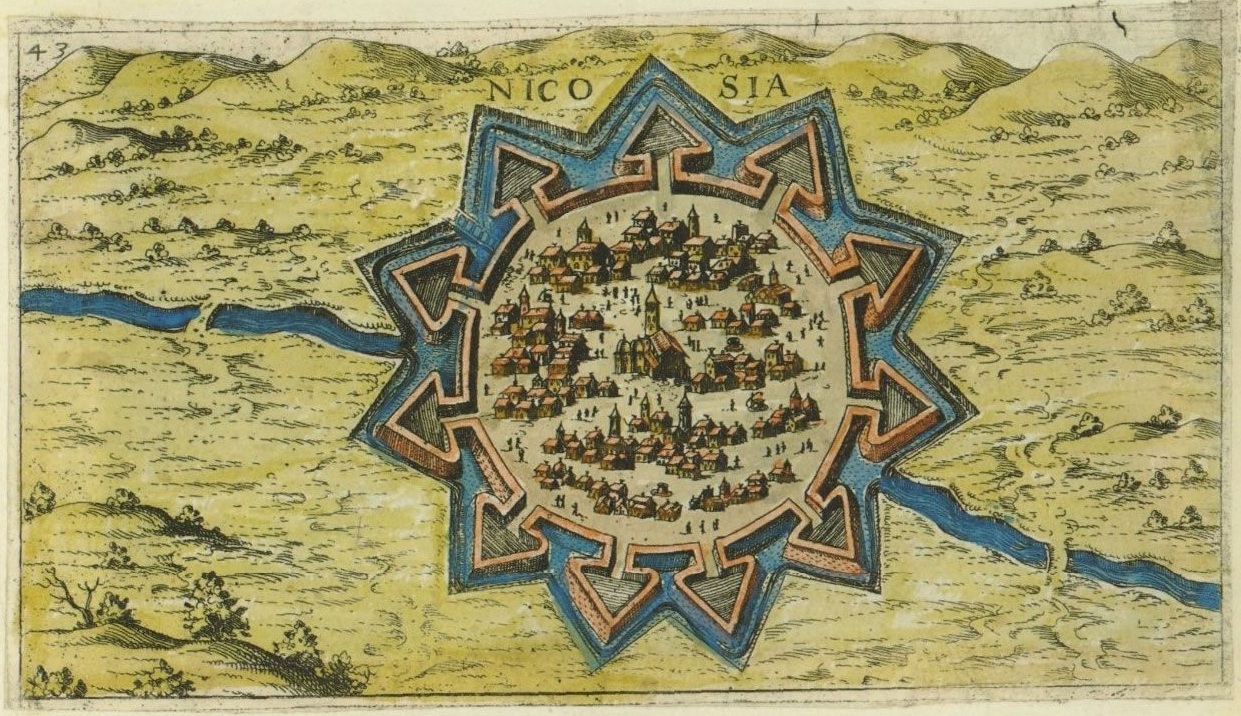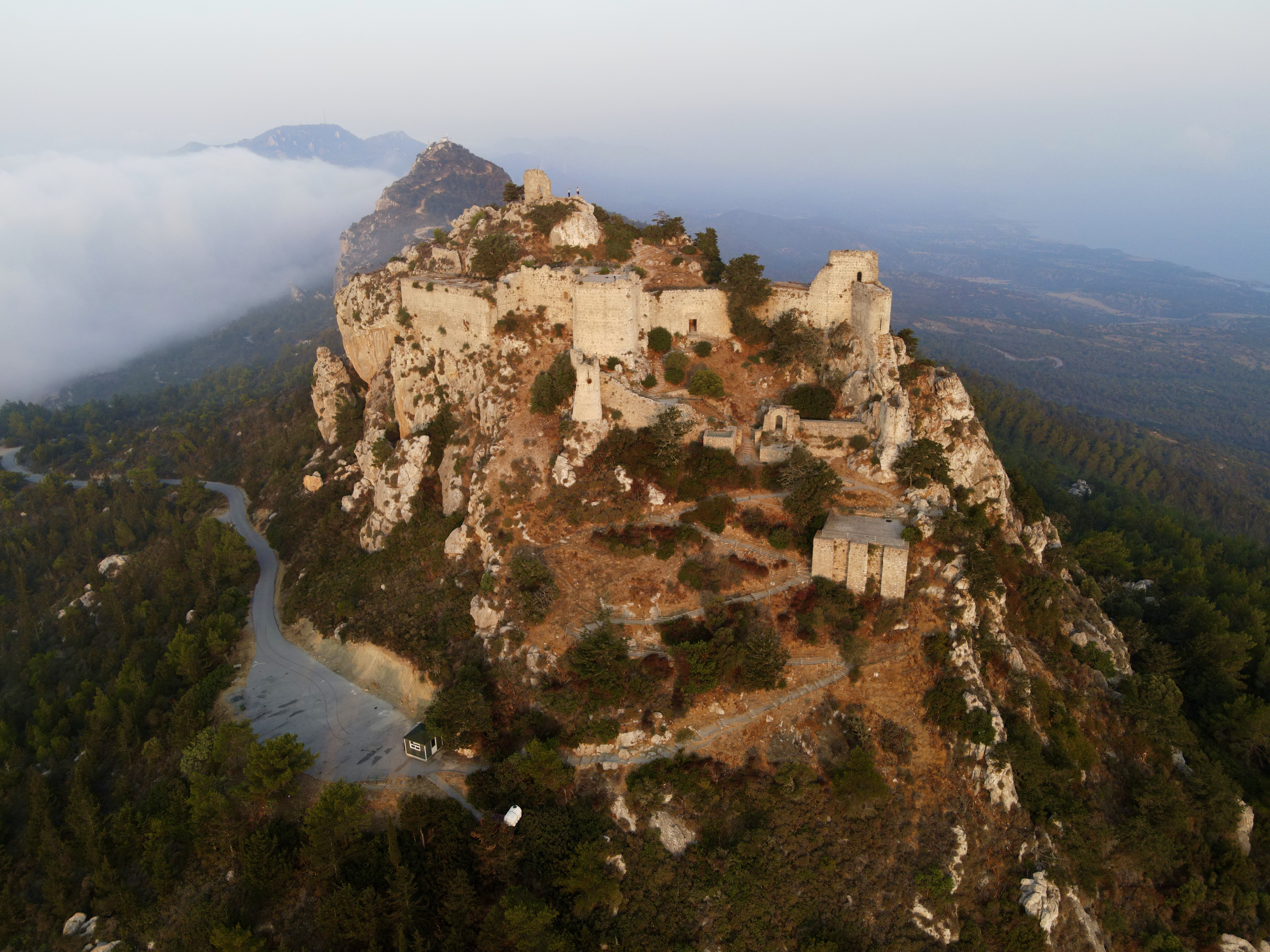|
Pallouriotissa
Pallouriotissa ( []) is an area of Nicosia, Cyprus, formerly an independent village, which was annexed to the municipality in 1968. It was subsequently divided into the quarters of Panayia (''Panagia'') and Saints Constantine and Helen (''Agioi Konstantinos kai Eleni''). As of 2011, their combined population was 15,607. Pallouriotissa is immediately south of Kaimakli. Etymology The name refers to the plant ''Palliouros'' known today as Palloura in Cypriot Greek, i.e. the Jujube plant. According to popular tradition, an icon of the Virgin Mary (Panayia) was found hidden in the branches of a large palloura plant.Information from the Church of Cyprus, http://www.churchofcyprus.org.cy/article.php?articleID=432, retrieved Nov 2013 History The settlement of Pallouriotissa, developed around the (female) monastery of the Virgin Mary of Pallouriotissa during the period of Lusignan dynasty, Lusignan rule in Cyprus, situated about a mile east of Nicosia. The year of foundation of t ... [...More Info...] [...Related Items...] OR: [Wikipedia] [Google] [Baidu] |
Nicosia
Nicosia, also known as Lefkosia and Lefkoşa, is the capital and largest city of Cyprus. It is the southeasternmost of all EU member states' capital cities. Nicosia has been continuously inhabited for over 5,500 years and has been the capital of Cyprus since the 10th century. It is the last divided capital in Europe; three years after Cyprus gained independence from British rule in 1960, the Bloody Christmas conflict between Greek Cypriots and Turkish Cypriots triggered intercommunal violence, and Nicosia's Greek Cypriot and Turkish Cypriot communities segregated into its south and north respectively in 1964. A decade later, Turkey invaded Cyprus following Greece's successful attempt to take over the island. The leaders of the takeover would later step down, but the dividing line running through Nicosia (and the rest of the island, interrupted only briefly by British military bases) became a demilitarised zone that remains under the control of Cyprus while heavil ... [...More Info...] [...Related Items...] OR: [Wikipedia] [Google] [Baidu] |
Districts Of Cyprus
Cyprus is Administrative division, divided into six districts (; ), whose Capital (political), capitals share the same name. The districts are subdivided into Municipalities of Cyprus, municipalities and communities. The districts of Cyprus are listed in the table below. Note: Northern Cyprus-controlled lands are included in the area figures, but population was not enumerated there. The United Nations Buffer Zone in Cyprus, UN Buffer Zone is included in both population and area figures. Akrotiri and Dhekelia are not included in the area figures, but non-military Cypriot citizens residing there were enumerated. See also * List of cities, towns and villages in Cyprus * Telephone numbers in Cyprus * Postal codes in Cyprus * ISO 3166-2:CY * Districts of Northern Cyprus References External links CityMayors article at ''geo.webnabor.com'' Districts of Cyprus, Subdivisions of Cyprus Lists of administrative divisions, Cyprus, Districts First-level administrative divi ... [...More Info...] [...Related Items...] OR: [Wikipedia] [Google] [Baidu] |
Nicosia District
The Nicosia District, or simply Nicosia (also Lefkosia and Lefkoşa), is one of the six districts of Cyprus. Its main town is the island country's capital city, Nicosia. The de facto TRNC-controlled northern part of the district is the Lefkoşa District of the unrecognized Turkish Republic of Northern Cyprus. TRNC-controlled areas of the Larnaca District of the Republic of Cyprus are administered as part of Nicosia District, while western parts of the Nicosia District under de facto TRNC control are administered as part of the new Güzelyurt and Lefke Districts. History Under Lusignan rule, at least the latter part and then during the Venetian period, the Kingdom of Cyprus was divided into eleven provinces called in French contrées and in Italian contrade. The area around Nicosia was the province of Vicomté (literally the domain of a Viscount). It covered the eastern half of the present District of Nicosia, what would later become the Nahiehs of Dagh and Deyirmenlik (orange ... [...More Info...] [...Related Items...] OR: [Wikipedia] [Google] [Baidu] |
Kaimakli
Kaimakli ( ; or ) is a large northeastern suburb of Nicosia, Cyprus. Since 1968, it belongs to the Municipality of Nicosia. Its population in 2011 was 11,564. Etymology Kaimakli derives from the Turkish ''kaymak'' whose basic meaning is cream, especially clotted cream, and, by extension, the best of something. The term also applies to the froth on top of a cup of Turkish coffee. Rupert Gunnis states that the suburb took its name from a farm that produced clotted cream. History Kaimakli has two churches, Saint Barbara's and Archangel Michael's, which was also a cemetery. In St. Barbara there are some interesting old icons, e.g. one of Virgin Mary dated back to 1763. In the 19th and 20th Century the inhabitants of Kaimakli where famed for their building and labouring skills. In 1878 when the British arrived, they found that the Venetians had diverted the river Pediaios north of the city, but the old riverbed still ran through the centre, creating an open sewer and rubbish dump ... [...More Info...] [...Related Items...] OR: [Wikipedia] [Google] [Baidu] |
Jujube
Jujube (UK ; US or ), sometimes jujuba, scientific name ''Ziziphus jujuba'', and also called red date, Chinese date, and Chinese jujube, is a species in the genus '' Ziziphus'' in the buckthorn family Rhamnaceae. It is often confused with the closely related Indian jujube, '' Z.mauritiana''. The Chinese jujube enjoys a diverse range of climates from temperate to tropical, whereas the Indian jujube is restricted to warmer subtropical and tropical climates. Description It is a small deciduous tree or shrub reaching a height of , usually with thorny branches. The leaves are shiny-green, ovate-acute, long and wide, with three conspicuous veins at the base, and a finely toothed margin. The flowers are small, wide, with five inconspicuous yellowish-green petals. The fruit is an edible oval drupe deep; when immature it is smooth-green, with the consistency and taste of an apple with lower acidity, maturing brown to purplish-black, and eventually wrinkled, looking like a sma ... [...More Info...] [...Related Items...] OR: [Wikipedia] [Google] [Baidu] |
Alsos Forest Path For Pedestrians Summer In Nicosia Republic Of Cyprus , an effort by the British and United States during World War II
{{disambiguation ...
Alsos may refer to: Places *Alsos Forest, a natural park in Nicosia, Cyprus * Alsos, Achaea, a village in the municipality of Sympoliteia in Achaea, Greece *Alsos Nea Smyrni *Alsos Veikou, a public park in Galatsi, in northern Athens, Greece *Alsos or Alysos, a rock in Meteora, Greece People *Christel Alsos (born 1984), Norwegian singer Other uses *Alsos Digital Library for Nuclear Issues *Alsos Mission The Alsos Mission was an organized effort by a team of British and United States military, scientific, and intelligence personnel to discover enemy scientific developments during World War II. Its chief focus was to investigate the progress that ... [...More Info...] [...Related Items...] OR: [Wikipedia] [Google] [Baidu] |
Lusignan Dynasty
The House of Lusignan ( ; ) was a royal house of French origin, which at various times ruled several principalities in Europe and the Levant, including the kingdoms of Jerusalem, Cyprus, and Armenia, from the 12th through the 15th centuries during the Middle Ages. It also had great influence in England and France. The family originated in Lusignan, in Poitou, western France, in the early 10th century. By the end of the 11th century, the family had risen to become the most prominent petty lords in the region from their castle at Lusignan. In the late 12th century, through marriages and inheritance, a cadet branch of the family came to control the kingdoms of Jerusalem and Cyprus. In the early 13th century, the main branch succeeded to the Counties of La Marche and Angoulême. As Crusader kings in the Latin East, they soon had connections with the Hethumid rulers of the Kingdom of Cilicia, which they inherited through marriage in the mid-14th century. The Armenian branch ... [...More Info...] [...Related Items...] OR: [Wikipedia] [Google] [Baidu] |
Kantara Castle
Kantara Castle ( ) is a castle in Cyprus, under the de facto control of Northern Cyprus. The exact date of its construction remains unknown, the most plausible theory being the Byzantine period. It combines Byzantine and Frankokratia, Frankish architectural elements, became derelict in 1525 and was dismantled in 1560. It gave its name to the nearby Kantara monastery. History Kantara is situated to the east of the Buffavento Castle with the St. Hilarion Castle standing even farther to the west forming a protective axis in the Kyrenia mountain range of Cyprus. As both of the other castles are visible from Buffavento, it was used to pass signals between them. The castles were built in conjunction during the Byzantine period but the date of their commission remains unknown. Among the theories put forward to explain their origin the popular are: In 965 (after the expulsion of the Arabs from the island), in 1091 by the rebel Rapsomates, Rhapsomates, during the rule of Eumathios Philoka ... [...More Info...] [...Related Items...] OR: [Wikipedia] [Google] [Baidu] |
Ayios Antonios Municipal Market Digeni Akrita Avenue Nicosia Republic Of Cyprus Kipros
''Agios'' (), plural ''Agioi'' (), transcribes masculine gender Greek words meaning 'sacred' or 'saint' (for example Agios Dimitrios, Agioi Anargyroi). It is frequently shortened in colloquial language to ''Ai'' (for example Ai Stratis). In polytonic script it is written ''Hagios'' () (for example Hagios Demetrios). It is also transliterated as, inter alia, ''Haghios'', ''Ayios'', ''Aghios'' (for example Ayios Dhometios, Aghios Andreas Beach, respectively) in the singular form, and ''Haghioi'', ''Ayioi'', ''Aghioi'', ''Ayii'' in the plural (for example Ayioi Omoloyites, Nicosia, Aghioi Theodoroi, Ayii Trimithias respectively). The feminine is ''agia'', ''ayia'', ''aghia'', ''hagia'' or ''haghia'' (Greek: or in polytonic form ), for example ''Agia Varvara'' (Saint Barbara). See also * * Agia (other), the feminine form of the word in Greek * Agis (other) * Agii (other) * Agius, a surname * ''Agos'', an Armenian newspaper * Agoi, a clan and language s ... [...More Info...] [...Related Items...] OR: [Wikipedia] [Google] [Baidu] |




